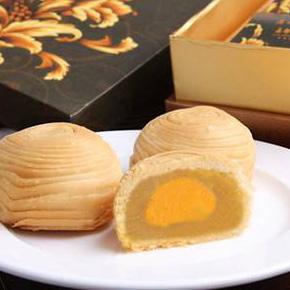
4 minute read
CULTURE: Mid-Autumn Festival
By Lina Zhu and Lijin Zhao

Advertisement

The Legend Love Story
The Mid-Autumn Festival is a festival celebrated notably by the Chinese families. It’s also related to Chuseok (in Korea) and Tsukimi (in Japan).
It traditionally falls on the 15th day of the eighth month in the Chinese lunar calendar, which is in September or early October in the Gregorian calendar. The Mid-Autumn Festival is the second most important festival in China after the Chinese New Year. Chinese people celebrate it by gathering for dinners and lighting paper lanterns.
The Mid-Autumn Festival is also called the Moon Festival. In the past, the Moon Festival was celebrated at harvest time. It was described as a


day for emperors to celebrate the year’s harvest by giving offerings to the moon and hosting a great feast. The ordinary people took the Mid-Autumn Festival to be a celebration of their hard work and harvest. Nowadays, people mainly celebrate the Moon Festival as a time for family reunions.
There is also a legendary love story about the history of the moon festival. Once upon a time, there were ten suns in the sky, scorching many crops and people to death. The Emperor of Heaven summoned Hou Yi to shoot down nine of the suns. He succeeded. The weather soon recovered and life was saved. Hou Yi was rewarded with the elixir of immortality. However, Hou Yi wanted to stay with his beloved wife, Chang E.
At about this time, since Hou Yi was world-renowned (in ancient China, at least) for having killed nine of their former suns, a ton of well-meaning sycophants sought Houyi out for apprenticeship. Among these apprentices was the crafty and not-so-well-meaning Peng Meng.
On the 15th day, before Hou Yi returned home from hunting, Peng Meng went to Hou Yi’s home and forced Chang E to give him the elixir. She knew that she could not defeat Peng Meng so, with no other choice, she drank the elixir herself. When Hou Yi came back, he found that his wife had been lifted to Heaven.
Chang E decided to live on the Moon because it’s closest to the Earth. Hou Yi looked up at the moon and put out foods Chang E used to love in the garden as a sacrifice. Thus, people started admiring the moon on this day.
Traditions
Family Reunion Dinner
People mainly celebrate the Moon Festival as a time for family reunions. Therefore, having a big reunion dinner together is one of the most important traditions of the Mid-Autumn Festival.

Eating Mooncake
Mooncake is the must-eat Mid-Autumn food in China. They are a dense, sweet traditional Chinese pastry. Most are filled with lotus paste and salted egg yolk while others contain red bean or date paste, as well as fruit, nuts, and seeds. People will also give mooncakes to family members and colleagues. Chinese people see in the roundness of mooncakes a symbol of reunion and happiness.

Appreciating the Moon/Watching the Full Moon
After the family dinner, Chinese people like to go to their rooftop or balcony to watch the moon. In Chinese beliefs, the full moon is the symbol of a family reunion and many believe that the moon is the roundest during the Mid-Autumn Festival. The moon is often a symbol of the motherland. Many famous ancient poets wrote poems about the moon and expressed their homesickness. When people look at the moon, it reminds them of their families and homeland.

Lighting Lanterns
Traditionally, many communities celebrate the Mid-Autumn Festival by making colorful paper lanterns and lighting them to the sky which is a symbol of good wishes. The candle is burned inside the lantern, and the heat makes it rise up to the sky. But nowadays, family members have replaced the traditional paper lantern with electric lanterns for the consideration of safety.


Traditional Mooncakes

Cantonese-style Mooncake Flavor: sweet or salty with thin crust
Cantonese-style mooncakes are thin crust and large fillings. The stuffing is mainly of lotus seed paste, coconut paste, yolks, bean paste, jujube paste or various meat. Cantonese-style moon cakes taste soft, and it is better to eat them together with tea.


Chaoshan-style Mooncake
Flavor: soft with crispy crust, oily but not fatty, sweet or salty but not greasy
The Chaoshan-style mooncake, or the teochew mooncake, is a famous traditional flaky mooncake in the Chaoshan area of Guangdong Province. According to the different types of stuffing, it can be divided into mung bean mooncake, black bean mooncake, seafood mooncake, yolks mooncake, etc. The kernel inside stuffing is commonly yolks or seafood.
Beijing-style Mooncake
Flavor: sweet
The most distinctive feature of the Beijing-style mooncake is the cooking method handed down from the ancient royal palace; the process of selecting materials and making the mooncake is quite complicated. The fillings are usually made from nuts, sweet-scented osmanthus, and rock sugar, etc. It is exquisite in appearance, and the crust is thin and crispy, attracting a lot of foodies.










